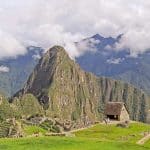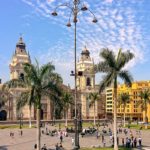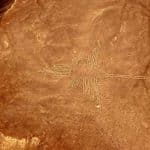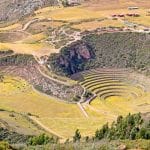Puno Peru; for you, the adventurer and explorer of the world, we present our Puno Travel Guide where you will find the most complete and updated tourist information about Puno and Lake Titicaca: the history, weather, altitude, festivities, tourist destinations, cuisine, and much more.
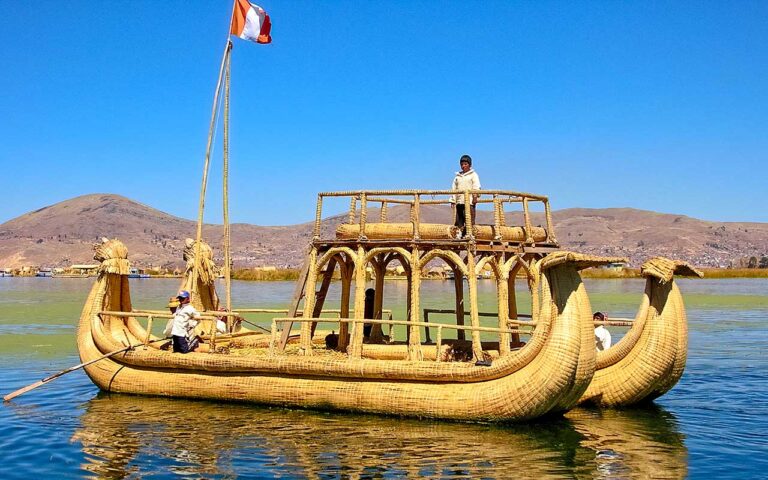
The Foundation of the City of Puno
The city of Puno was founded on November 4, 1668, as the city of San Carlos de Puno.
General characteristics of Puno
- Capital: City of Puno.
- Area: 66,997 km².
- Population: 1173 million inhabitants.
- Altitude: 3827 masl.
- Telephone prefix: 051.
- Nickname of the inhabitants: Punenyo, Punenya.
- Names and titles: Capital of Peruvian Folklore, City of Silver, Land of Artists and Poets, City of the Sacred Lake.
The Location of Puno
The Puno region is located south of Lima, close to the cities of Arequipa, Cusco and Madre de Dios. Its capital, the city of Puno, is located on the shores of Lake Titicaca.
To be specific, the exact geographical coordinates of the Puno region are as follows:
- Latitude: between 13°0066’00” and 17°17’30” south latitude.
- Longitude: between 71°06’57” and 68°48’46” west longitude.
Likewise, the boundaries of this Altiplano region, are as follows:
- North: the Cusco region and the Madre de Dios region.
- East: the country of Bolivia.
- Southeast: the Moquegua region and the Tacna region.
- West: the Cusco region and Arequipa region.
To be exact, it is also necessary to indicate that 70% of the territory of the Puno region is located on the Collao plateau, and the other 30% of the region is located in the lowlands of the Amazon.
History
The region of Puno was the territory of the Pucará and Tiahuanaco cultures. At present there are innumerable remains that clearly show the early occupation of Puno by these two cultures and also by other, earlier cultures.
Over the years, Puno became a prosperous town on the shores of Lake Titicaca. And its population was composed of Qollas, Aymaras and Quechuas.
According to old mythological legends and stories, some of the ancient inhabitants of Puno migrated westward and gave rise to one of the greatest of South America’s civilizations, the Inca culture.
During the early Colonial period, the city of Puno was as a quiet town. But on November 4, 1668, Viceroy Conde de Lemos made it the capital of the province of Paucarcolla. From this point on, it stopped being called San Juan Bautista de Puno and came to be called San Carlos de Puno.
However, the Puno region was not created as a region until April 26, 1822.
How to get to Puno?
Puno is located in a very accessible area. So it is easy to visit to this beautiful region without encountering hassles.
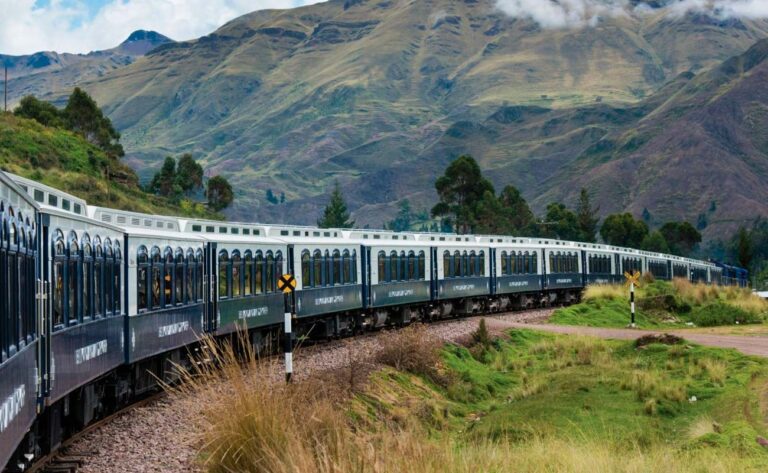
Let’s see. What are the main ways of reaching this Altiplano region?
- By Air: The most comfortable and the safest way to get to Puno is by taking a domestic flight departing from Lima or Cusco to the city of Juliaca. The main airline that operates routes into Juliaca is Latam. It has 3 direct daily flights between Lima and Juliaca, and 1 direct flight daily between Cusco and Juliaca. In the upcoming months, Aero Peru is scheduled to start operating 3 direct Lima – Juliaca flights daily. The flight time between Lima and Juliaca is 1 hour and 40 minutes. Whereas the flight time between Cusco and Juliaca is 40 minutes. From Juliaca, the average time of the journey by car to the city of Puno is one hour.
- By Land: At present, Puno can be reached from anywhere in Peru. It can even be reached from Bolivia, Brazil and Chile. In order to reach the city of Puno by land you can consider the following routes or roads:
- Lima – Nazca – Arequipa – Cabanillas – Juliaca – Puno.
- Cusco – Puno.
- Arequipa – Puno.
- Puerto Maldonado – Mazuko – Puno.
- Tacna – Puno.
- Moquegua – Puno.
- La Paz (Bolivia) – Puno.
By Train:
A vibrant journey through a time honored land; rekindle the romance of the rails as you carve a path between Peru’s natural wonders and ancient kingdoms. South America’s first luxury sleeper train glides from Cusco, the capital of the Inca Empire, across the lofty Andean plains to the spectacular highlights Lake Titicaca and Puno.
Elevation
The city of Puno is located at an elevation of 3827 masl. The city is hilly, so the altitude varies in different parts of the city. In the region as a whole, the elevation ranges from a low of 820 masl. to a high of 4724 masl. Because of the high elevation, it is recommended that visitors should be aware of the possibility of and consider protection against altitude sickness (Soroche).
Distance
The distance to Puno from the other principle cities of Peru is as follows:
- Lima – Puno: 1300 km. or 22 hours.
- Arequipa – Puno. 297 km. or 6 and a half hours.
- Juliaca – Puno: 44 km. or 1 hour.
- Cusco – Puno: 387 km 7 hours.
- Tacna – Puno, via Moquegua: 425 km. or 8 hours.
- Moquegua – Puno: 270 km. or 5 hours.
- Puerto Maldonado – Puno: 605 km. or 11 hours.
- La Paz, Bolivia – Puno: 263 km. or 5 hours; Santiago, Chile – Puno: 2576 km. or 33 hours.
- Rio de Janeiro, Brazil – Puno (via Bolivia): 3570 km. or 52 hours.
Within the Puno region, the distances to the main cities is as follows:
- Ilave (Collao Province): 54 km. or 1 hour and 20 minutes.
- Juli (Province of Chucuito): 79 km. or 1 hour and 40 minutes.
- Yunguyo (Yunguyo Province): 128 km. or 3 hours.
- Juliaca (Province of San Román): 44 km. or 1 hour.
- Lampa (Province of Lampa): 79 km. or 1 hour and 40 minutes.
- Huancané (Province of Huancané): 99 km. or 2 hours and 30 minutes.
- Putina (Province of San Antonio de Putina): 124 km. or 2 hours and 40 minutes.
- Azángaro (Province of Azángaro): 137 km 2 hours and 30 minutes.
- Ayaviri (Melgar Province): 137 km. or 2 hours and 40 minutes.
- Moho (Province of Moho): 138 km. or 2 hours and 40 minutes.
- Macusani (Carabaya Province): 256 km. or 4 hours and 20 minutes.
- Sandia (Province of Sandia): 272 km. or 6 hours and 20 minutes.
Weather
The climate of Puno is quite chilly and moderately rainy during the months of November and December. During February, January, and March the rains are heavier. The sunny months extend from May through September. Before traveling to Puno, it is essential to know that the weather can get cold at any time of the year. This due to its geographical location and its altitude which varies from 3,800 masl. to 6,000 masl.
The average temperature is 8 ° C. The high is usually around 15 ° C, but sometimes it reaches 19°. During the winter months, the normal low is 1 ° C, but a low of -5 ° degrees below zero is not unheard of. The amount of rainfall varies from year to year.
Tourist Destinations
In your next adventure to the city of Puno, don’t forget to visit this beautiful highland city’s main tourist attractions. In this next section we will list for you Puno’s most important tourist destinations:
- The City of Puno itself.
- Lake Titicaca.
- The Floating Islands of the Uros.
- Las Chullpas (Burial Towers) of Sillustani.
- Pukara.
- Chucuito Peninsula.
- Taquile Island.
- Amantani Island.
- The Island of the Sun.
- Aramu Muru Gate.
- Tinajani Canyon.
- Lampa City, Capachica Peninsula.
- Llachon.
- Tikonata Island.
- Cutimbo Archaeological Complex.
- Molloco Archaeological Site.
- Luquina Chico.
- Kuntur Wasi Viewpoint.
In order to better inform our travelers, we have prepared an exclusive post about Puno’s principle tourist sites. However, in advance of uploading that post, you will find below a summary of Lake Titicaca, the area’s greatest tourist attraction.
Titicaca Lake
Lake Titicaca is the highest, navigable freshwater lake in the world. This Natural Heritage is located in the Puno region, and it is shared with the neighboring country of Bolivia. In the middle of Lake Titicaca there are majestic islands that are inhabited by fishermen and farmers. Out on the islands the local people still practice their ancestral customs. The most important islands are: the Floating Islands of the Uros, the Island of Taquile and the Island Amantaní.
All around this sacred and mystical Lake, there are people who live in ancient villages. The inhabitants of these villages, along with the numerous tourists who come to visit from all over the world, sail out onto the Lake’s cold blue waters every day.
According to Andean legend, the founders of the amazing Incan dynasty emerged from the pristine waters of this Lake.
Puno Tourist Calendar
Puno is famous not only for Lake Titicaca and the Floating Islands, but also for its living culture and its ancient traditions. So, next time you visit Puno, don’t forget to appreciate its great cultural legacy which is still present in the customs and traditions of its people.
- Jan. 3: Yunguyo, Feast of the Sweet Name of Jesus.
- Jan. 6: Illave, Feast of the Alasitas.
- Feb. 1-11: Feast of Our Lady of the Candelaria.
- February: Carnival.
- April: Holy Week (The dates change every year).
- April 9: Anniversary of Amantani Island.
- May 2: Handicrafts Festival of the Alasitas in Juliaca.
- May 3: Feastival of the Velacuy Cross.
- May 28: Feast of the Holy Spirit, various provinces.
- May 16: Feast of Pucará and the staging of the Jatun Nak’aq.
- June 21: Aymara New Year.
- June 24: Feast of St. John. Also, Inti Raymi.
- June 29: Feast of St. Peter and St. Paul.
- August 15: Feast of the Assumption of the Virgin Mary, in Umachiri, Cabana and Yunguyo.
- September 8: Feast of the Virgin of the Nativity, Chucuito.
- September 24: Feast of the Virgin of Mercedes, in Zepita, Chucuito, Juliaca, Puno and Vilque.
- Last Sunday of September: Staging of the Capac Ccolla in Sillustani.
- October 24: Anniversary of the province of Juliaca.
- November 1: All Saints Day
- November 1 to 7: Puno tourist week.
- November 4: Puno Anniversary.
- November 5: Staging of the Legend of Manco Cápac and Mama Ocllo, on Lake Titicaca.
- November 8: Feast of the Immaculate Conception.
- December 4: Santa Barbara Festival and the Alasitas Fair in Chucuito.
- December 8: Feast of the Immaculate Conception, in Lampa, Macusani, Melgar, Juli, Nuñoa, Paucarcolla and Puno.
- December 24: Celebration of the Birth of the Infant Jesus, and representations of Christmas Nativity Scenes in the churches of Puno.
The Cuisine of Puno
Right now, Puno is an important tourist destination where you can enjoy a great variety of exquisite dishes, each of which are characterized by its unique flavor. This is due to three factors: a great historical gastronomic tradition; the richness of the land; and the cross-border fusion of Bolivian and Peruvian cuisine.
The typical dishes of Puno have an unmatched flavor and texture. Their preparation is based on Andean products and herbs native to the area.
- Quinoa Fish: this fish plate is very typical of the Puno region. It is prepared with quinoa, an Andean product that has become very popular worldwide over the past few years. Quinoa fish is usually eaten for breakfast or for dinner. Quinoa, salt, butter, water, cheese and fresh milk are the basic ingredients used in its preparation.
- Quinoa Chupe: Quinoa Chupe is a dish that is high in both proteins and vitamins. It is made with quinoa which is first cooked in salt water. Then the vegetables are added. The notable ingredients in Quinoa Chupe are the head and backbone of the fish and /or the shellfish.
- Fried Trout. Fried trout is one of the most popular dishes in Puno. It is delightful, easily prepared, and very nutritious. It is full of vitamins and minerals. It is served with golden fried potatoes or with corn-on-the-cob.
- Alpaca chicharrón. (Deep-fried alpaca) This is a typical highland dish found in Puno, Juliaca, and Ayaviri. It is usually served during festivities and at Sunday fairs. However, given its gastronomic importance, today it is possible to find it in local markets and in Puno’s luxury restaurants. Alpaca meat is the basis of this dish. Alpaca is a Peruvian super-food par excellence, which is light on the stomach, high in protein, and easy to digest.
Popular gastronomy in Puno and Lake Titicaca
- Punchy or Sajta Stew: This is a dish which is typical of the Puno region. It is made with chicken, locally grown potatoes, green peas, onions, and plenty of carrots. It is usually eaten early in the day.
- Cancacho: Cancacho is originally from Ayaviri which is the livestock capital of the Puno region. Cancacho means “roast lamb” in Castilian. It is cooked in a brick oven using wood for fuel. The main ingredients are: male lamb, native potatoes, chili pepper and black beer. You can find cancacho for sale at the bus stops and in local markets.
- Chairo: chairo soup is a delicious and nutritious dish that is served on the work days of Ayni or Mink’a. It is prepared with lamb and lots of different vegetables like carrots, celery, green beans, garlic, onions, potatoes, black chuño (Andean freeze-dried potato), salt and oregano.
Tourism in Puno
As a tourist in Puno you can be part of its magical atmosphere where legends, traditions and colorful parties can be found throughout the year. The amazing Floating Islands of the Uros are only surpassed by the crystalline waters of Lake Titicaca, itself. Every Puno resident is proud of his heritage and his past. This folk tradition is renewed through its typical dances. The most emblematic holiday is the great party in honor of the Virgin de la Candelaria. There are so many reasons to visit Puno and explore its most popular tourist attractions such as Lake Titicaca.
Tourist activities
Incredible landscapes, fabulous culture, and a grand folkloric tradition, these are the stand-out characteristics of Puno, and they are reflected in its innumerable tourist attractions. For these reasons, in Puno you can participate in a wide variety of tours and tourist activities that take place in and around Lake Titicaca.
Some of the main types of tourist activities that you can enjoy in Puno are:
- Archaeological tourism.
- Traditional tourism.
- Kayaking on the highest lake in the world.
- And Mystical tourism.
We also have, for you, the best tours to Puno.
Travel services
Accommodations in Puno
The hotels and lodging establishments in Puno have all the comforts that you will need. They provide a first class level of service. Therefore, in this city you can enjoy a pleasant and convenient stay.
Every day of the year there is lodging available for the visitor, in basic hostels, and all the way up through 4-star luxury, world-class hotels.
- GHL Hotel Lago Titicaca Puno.
- Hotel Titilaka.
- Casa Andina Premium Puno.
- Amantica Lodge.
- Taypicala Lago Titicaca.
- Sonesta Posada del Inca Puno.
- Hotel José Antonio Puno.
- Xima Puno Hotel.
- Royal Inn Hotel Puno.
- Hotel Qalasaya.
Restaurants
Puno has an inexhaustible supply of fruits, grains and vegetables that are used by the Altiplano chefs in order to prepare the best dishes which are served in their main restaurants:
- Mojsa Restaurant.
- La Table Del’ Inca.
- Restaurant Los Uros.
- Alma Bar Restaurant.
- Tulipan’s Restaurant.
- La Casona Restaurant.
- Café Bar La Casa del Corregidor.
- Valeria Restaurant.
- La Casona Restaurant.
- Los Balcones de Puno.
- Restaurant Colors.
- Café Buho.
- Loving Hut Vegan Restaurant.
Hospitals and Clinics
Compared to other destinations in Peru, the city of Puno does not have a long list of clinics and hospitals. However, on the list of hospitals, clinics, health centers, and pharmacies that we present below, there are more than enough to guarantee you a good healthy visit.
- Manuel Nunez Butron Regional Hospital. Av. El Sol 1022, (051) 369696.
- ESsalud Hospital III South Region, Puno. Av. Industrial 26, (051) 599090.
- Medglobal – Puno. Jiron June 7, 201, on the corner of Callao Juliaca. (051) 368835.
- American Clinic Jirón Loreto 315, Juliaca. (051) 602400.
- Specialized Medical Institute – Puno Clinic. Jirón Ramón Castilla 178. (051) 368835.
- Hospital ESsalud Central de Juliaca. José Santos Chocano Avenue.
The Traditional and the Artisan Markets of Puno
- Puno Central Market.
- The crafts market at the Puno harbor.
- The Sunday crafts fair in Pino Park.
- Association San José, Víctor Haya de la Torre, Puerto and La Cholita.
- Tucuy Atipac Craft Center. Psje. Lima 339, 2nd level.
- Coriwasi Association Artisan Market, Alfonso Ugarte Street 150.
- Craft Center Original Folk Art. Inca Manco Cápac International Airport, Juliaca.
Malls
The City of Puno does not have many shopping centers. There is currently a Real Plaza where you can find department stores such as Plaza Vea. Compared to other shopping centers, this one has all the basics.
Banks, ATMs and Currency Exchange
Finally, in Puno you will also find a limited number of banks, ATMs and currency exchanges. They are located in the historic center of the city of Puno: Puno Credit Bank, Interbank Puno, Scotiabank, Financial Bank, Continental Bank, Puno Nation Bank, Cusco Puno Box, My Puno Bank.
- Banco de Crédito de Puno.
- Interbank Puno.
- Scotiabank.
- Banco Financiero.
- Banco Continental.
- Banco de la Nación Puno.
- Caja Cusco Puno.
- Mi Banco Puno.
Come visit Puno and surround yourself with the charm of Lake Titicaca and its ancient folkloric tradition.
